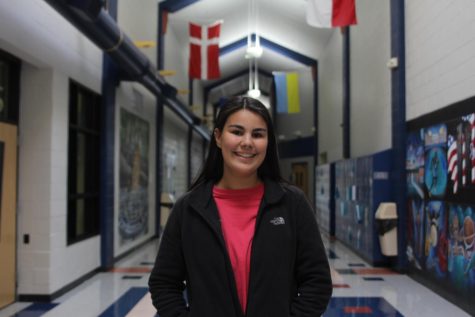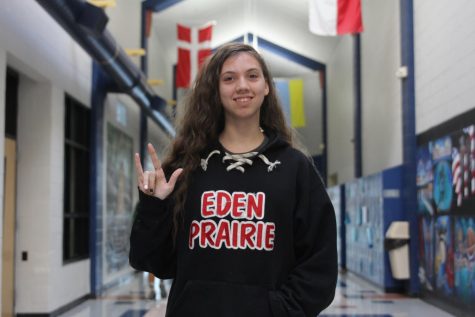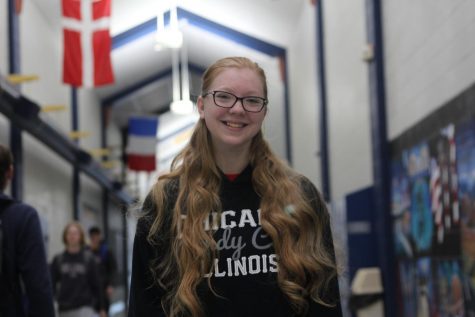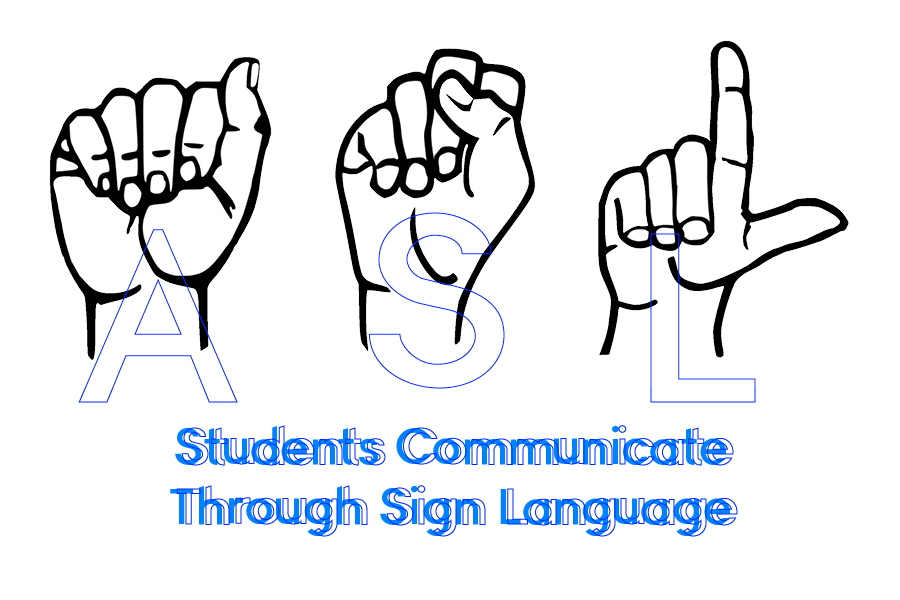By Anna Ricker
Students communicate nonverbally through sign language
Knowing sign language has expanded the horizons for students to communicate, especially with their family members
Junior Maddie Valencia uses the visual form of communication, sign language, to talk to her mom who was born deaf. Whether that be from talking about her day to asking her mom a question, sign language provides Valencia the opportunity to communicate with her mom.

Junior Maddie Valencia has learned and used sign language for many years. “I started to learn signing when I was 10 months old [because] I’m a coda, which means I’m a child of a deaf adult. My mom is deaf and I have a deaf uncle so that is why I know sign language.” Valencia said. “I would say [sign language is] interesting because you can be super far away from a person and still be able to communicate. [For example,] if I’m at a sporting event with my parents and I’m down on the court and their up in the bleachers, we can still communicate with each other and not everyone can know what we’re saying, which I think is really cool.”
Despite having learned the language from a young age, Valencia believes it is impossible to learn every sign.
“I don’t feel like you can ever fully know sign language because there are so many different signs,” Valencia said. “I learn new signs on a daily basis just by watching my mom and friends.”

Holding up the sign for “love”, sophomore Kim Schein learned sign language as another way of communicating with her dad, who has only 50% hearing in both ears. “I don’t know how many specific years [I have been signing] but my dad signs a lot so I caught on [and] sometimes he can’t hear us so I’ll sign to him instead.” K. Shein says, “I think [sign language is] unique because you can [sign] in many different languages, not just English and it translates to a whole different category of languages.”
“My dad has 50 percent of his hearing so sometimes he would sign to my mom instead of speak,” Kim said. “I will also sign to him when he is on work phone calls.”
Some students, such as senior Allison Schein, started learning sign language because it seemed interesting and useful.
“I decided to start learning because my dad knows it almost fluently and it looked pretty fun,” Allison said. “Also, my parents would speak it from across the dinner table whenever they didn’t want me and sister to know what they were saying, so I took it upon myself to figure out what they said.

Senior Allison Schein uses sign language as another way of communicating with her dad and other people with hearing disabilities. “[I know sign language because] my dad speaks sign language fluently and I know a lot of my friend’s parents who are deaf so I am able to communicate with them,” A. Allison said. “I think [sign language is] fun … once you learn a lot more words and you become faster at it and better at it, [signing] becomes more fun.”
“It’s nice because when we are out in public, we can talk to each other if we are far away from each other,” Valencia said. “If I am down on the [football] field and my parents are up in the bleachers, I can talk to them … and I just think that is really fascinating.”
Although she is still trying to learn the language, Allison believes that despite the difficulties, it is worth it in the end.
“I still haven’t caught on all the way, but overall I love knowing sign language” Allison said. “It helps me communicate with my family and it is a fun skill to have.”
